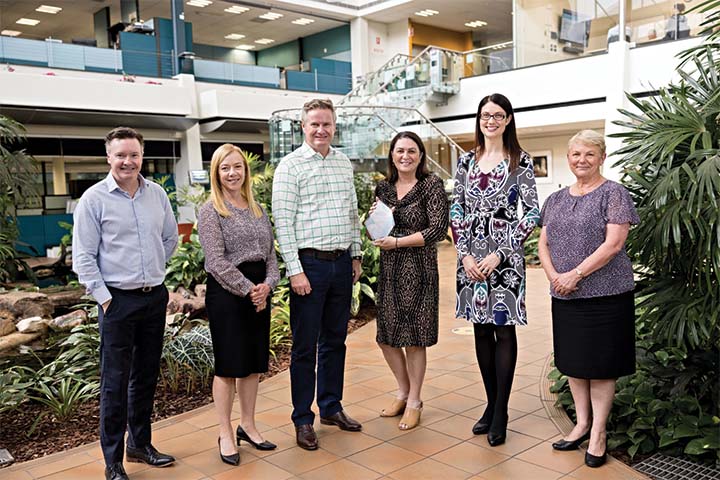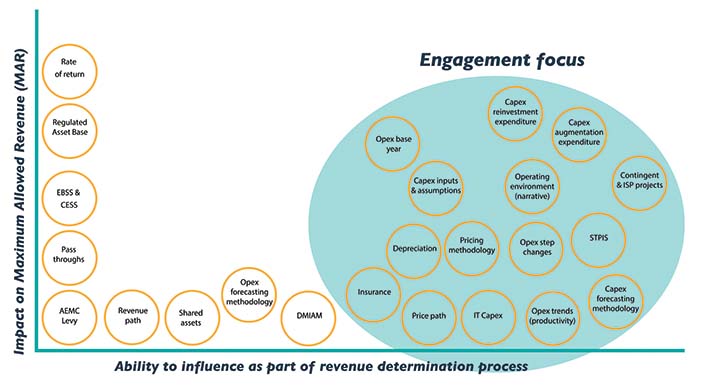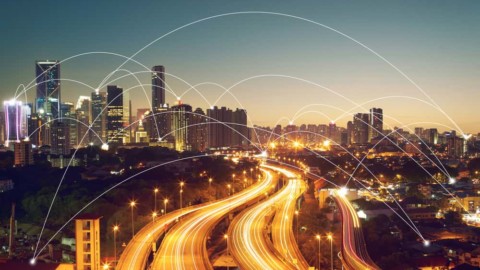Powerlink was recently announced as the winner of the 2021 Energy Network Consumer Engagement Award for its engagement approach on its 2023-27 revenue determination process. Jointly run by Energy Networks Australia (ENA) and Energy Consumers Australia, the award recognises excellence in consumer and customer engagement by an Australian energy network. We asked Powerlink General Manager Communications, Customer & Engagement, Gerard Reilly, to provide some insights into the utility’s engagement mindset and approach.
Q: What were Powerlink’s goals in terms of customer engagement? Does the business feel that those goals were achieved?
A: The success of our engagement for our revenue determination was built on the strength of Powerlink’s business-as-usual approach.
We established our Customer Panel in 2015 and have worked closely with panel members over the last six years to create an environment of trust and knowledge sharing. Showing our vulnerabilities as a business is important. Our engagement approach is built on having conversations with customers on topics where we don’t know the answer, and then use their input to improve the decisions we make.
For our 2023-27 revenue determination, we set a clear goal to deliver a Revenue Proposal that is capable of acceptance by our customers, the Australian Energy Regulator (AER) and Powerlink. To achieve this we knew our customer engagement would need to step up to a new level.

(Left to right) Paul Simshauser (Chief Executive Powerlink Queensland), Merryn York (ENA judging panel member), Gerard Reilly (General Manager Communications, Customer and Engagement), Jenny Harris (General Manager Network Regulation), Kiara Bowles (External Communications Specialist), Robyn Robinson (ENA judging panel member). Photo credit: All is Light Photography
We were extremely pleased when both the AER, in its Draft Decision, and our Customer Panel stated that we had met that capable of acceptance goal. I think we have changed the way that network businesses view engagement for Revenue Proposals and moved the capable of acceptance goal from being aspirational to achievable.
Q: How did Powerlink integrate customers, market bodies, and board and executive teams within the business into the revenue determination engagement process?
A: The key learning from our previous revenue determination was to better involve our customers in developing our approach to engaging with them – a co-design process. Our commitment to a co-design approach and achieving capable of acceptance was embraced and encouraged by our Board and Executive.
Our engagement started almost two years before our Revenue Proposal was due for submission with a co-design workshop held in May 2019. This was the first time a network business co-designed its engagement approach for a revenue determination. We workshopped our engagement approach, scope, techniques and evaluation processes.
Setting a clear engagement scope was particularly important. We wanted to focus engagement on the items that really mattered – and could be influenced through customer input.
We had customers plot aspects of our revenue determination on a graph against two-axis – one was that elements impact on Maximum Allowed Revenue (in other words the amount that consumers pay Powerlink over the five-year regulatory period), and the other was the ability for that element to be influenced through the Revenue Determination process.

Powerlink’s engagement scope was an integral component of the Revenue Proposal building process. Source: Powerlink.
But we went further. We then plotted these aspects against the IAP2 Spectrum so that customers could clearly gain an expectation of how much influence they could have against each aspect. We established a Revenue Proposal Reference Group, a sub-set of our wider Customer Panel, via an Expression of Interest process.
The Reference Group allowed for deeper and more frequent engagement on key topics, creating greater awareness and understanding of the issues, trade-offs and consequences of taking various courses of action. The Reference Group met 13 times over 18 months.
Outcomes of Reference Group meetings were then communicated back to the wider Customer Panel by one of the members. Our Customer Panel also met a number of times by themselves to consider our engagement approach and come back to us on areas that required further discussion.
To achieve our capable of acceptance goal, we also needed to engage early, regularly, and genuinely with the AER and the AER Consumer Challenge Panel. AER and AER Consumer Challenge Panel representatives attended Customer Panel and Reference Group meetings. These representatives also met monthly with our team as we provided early versions of our models for AER cross-checking as well as information on an ad hoc basis.
Q: What does customer engagement mean to Powerlink?
A: Powerlink has an underlying thematic of world-class. We want to push and challenge ourselves to be world-class in everything we do – customer engagement is no exception. As a transmission business, we have a diverse range of customer segments.
From the five million Queenslanders who rely on our services to customers directly connected or seeking to connect to our network – such as renewable generators. Customers have to play an active role in the energy system transformation.
We need to ensure that no customer segment is left behind. So, as an industry, we need to better engage with our customers to make the best possible decisions. A key focus of Powerlink’s new corporate strategy is to ‘Drive Value for Customers’. You can only do this effectively if you are having active discussions with customers on topics they can influence and are of importance to them.
We have also continued to build engagement capacity within Powerlink, with many technical experts participating in an engagement setting for the first time. Their exposure to our Customer Panel and Revenue Proposal Reference Group has reinforced our customer focus across more technical areas of the business.
Q: What insights can Powerlink share with the industry following the revenue determination process?
A: A key learning was that we did not appreciate the challenges associated with defining ‘capable of acceptance’ and determining what this means up-front. We should have engaged earlier on the criteria and set expectations with customers and the AER.
We also learned that to have any chance of achieving a Revenue Proposal that was capable of acceptance, all parties involved must truly be on board and play their part in trying to achieve something greater than the sum of the parts. This takes trust and a leap of faith.
We showed our customers the willingness to pivot and adjust our approach based on their direct feedback. A good example was our decision to publish a Draft Revenue Proposal. This wasn’t in our original plans but we changed following discussions with our Customer Panel.
We also struggled to connect with regional stakeholders, not only due to COVID impacting our ability to travel to regional areas, but as a transmission business, we struggle for broader stakeholder involvement in engagement activities. We have recently appointed new members to our Customer Panel to better represent the view of regional customers.
Another key insight is the importance of education and building capacity with customers. We want feedback from customers, but the value comes from receiving informed feedback. It is up to us to educate and build a wider industry understanding so they can optimise their input.
There was great value in using our existing and long-standing Customer Panel members at the core of our engagement for our Revenue Proposal. They understand Powerlink and the operating environment we are facing and were therefore best placed to help shape our thinking.
Our engagement on the Revenue Proposal was time-intensive. We asked a lot of our customer representatives, so it was important that we sought to financially reimburse engagement participants for their time. Members of the Reference Group were offered an hourly rate. For 2022, this has been expanded to members of our Customer Panel.
Q: What does customer engagement look like in Powerlink’s future?
A: The sheer breadth of change that comes with the energy system transformation means that meeting the needs and expectations of the communities we work in is more important than ever.
We are also a founding signatory of The Energy Charter, with a key focus in 2022 on improving the way that transmission businesses engage with landholders and communities impacted by new energy infrastructure.
We have always held a strong view that engaging with local communities is an important part of providing our electricity transmission services. Now more than ever we are focusing on partnerships that deliver local community benefits for the long term.

















